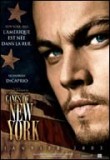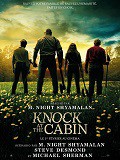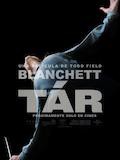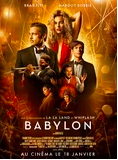Gangs of New York (english version)

États-Unis, 2002
De Martin Scorsese
Scénario : Jay Cocks, Kenneth Lonergan, Steven Zaillian
Avec : Jim Broadbent, Daniel Day-Lewis, Cameron Diaz, Brendan Gleeson, John C. Reilly
Durée : 2h50
Sortie : 01/01/2002






It’s 1860 and New York’s harbor is constantly being delivered loads of Irish immigrants. In total chaos, gangs of different backgrounds are fighting for control. The police is overwhelmed and the politicians corrupt. The Civil Wars is dawning.
Martin Scorsese is the first filmmaker to put on the screen the New York city of the mid 1800’s. The setting is original and surprising, somewhat post-apocalyptic by moments. In the middle of this, two gangs are getting ready to fight: the Natives, headed by Bill the Butcher (Daniel Day-Lewis), who think of themselves as legitimate Americans though most of them are from an English or Dutch background; and the Dead Rabbits, recently-arrived Irish immigrants whose leader is Priest Vallon (Liam Neeson). The two groups rush towards each other and fight. Yes, New York was indeed born in the streets.
In what could be seen as an answer to his country’s protectionist policy, Scorsese reminds us of what America was made from in the first place: cultural blending. It’s true for today as it is for the movie’s depiction of the 1860s: New York is still made up of isolated communities and the immigrants are still deemed a threat for democracy or religion. Considering the deeply original choice of setting, Scorsese can’t rely on his usual cinematic references. Hawks, Ford, Welles and Powell have all treated the first half of America’s 20th century, but that’s it. Only Visconti, whose influence on Scorsese can be deeply felt in The Age of Innocence, can be considered a “support” with films such as The Leopard or Senso.
The three screenwriters, who worked on the project at turns and never together, chose to make use of classic Shakespearian themes. Amsterdam Vallon (Leonardo DiCaprio), in Hamlet-like fashion, is back to avenge his father’s death. Although it’s just an excuse to go dig up this lost past, this storyline is painfully unoriginal and never quite manages to take a different or surprising turn. Most scenes are predictable and the dialogue is heavy-handed enough to make us lose all enthusiasm for such a promising New World. The voice-over is not useful in any way and the main character is way too bland, especially when compared to such complex and interesting figures as Bill the Butcher, Jenny the thief (Cameron Diaz) or corrupt politician Boss Tweed (Jim Broadbent).
As opposed to Scorsese’s previous movies, the script puts the emphasis on story and not on character. But as it goes along, the film gets more and more multi-layered and rich. For the umpteenth time, Scorsese does a variation on the sins of the flesh, man’s duality and religious taboo. Gangs of New York is somewhat reminiscent of The Last Temptation of Christ in that they both depict a trio of characters: Jesus, Judas and Mary Magdalene and one part and Amsterdam, Bill and Jenny on the other. Like Jesus, Amsterdam is going to take over for his father. On the way, he meets a young and sinful woman (Mary Magdalene is a prostitute and Jenny a thief) for whom he has repressed sexual feelings. Bill the Butcher is Judas-like in that he’s the man on the street, violent but respectable, and an improvised father-figure. After a classic initiatory experience, he takes the head of a collective rebellion, all the way hesitating between love and violence.
Gangs of New York is surprising in its directing and editing. Far from the eccentricity of Bringing out the Dead or Casino, it stays mostly quite calm and sober. The fighting is particularly well depicted (remember Raging Bull) and always filmed from the point of view of the one who’s getting beaten up. The crowd and battle scenes are very impressive thanks to Thelma’s Schoonmaker highly dynamic editing. The general impression is a little disappointing though mainly because of the use of accelerated movements on some shots, but there are nonetheless beautiful moments such as a long shot showing young immigrants getting recruited against their will to go fight and loaded on a ship from which are pouring out the coffins from the previous batch of soldiers.
The movie’s main quality is the use that Scorsese makes of his exteriors, his sets, to convey a sense of an unique world where a spiritual battle is about to be fought. The music contributes enormously to that through its ancient sonorities and modern rythms. The actors range from the excellent (Daniel Day-Lewis), to the surprising (Cameron Diaz) and the ‘very good’ (Leonardo DiCaprio, Jim Broadbent, Brendan Gleeson).
Gangs of New York is an exciting, eccentric and very scorsesian piece of work that finds very deep resonance in this post-September 11th world notably thanks to a highly symbolic final shot.







